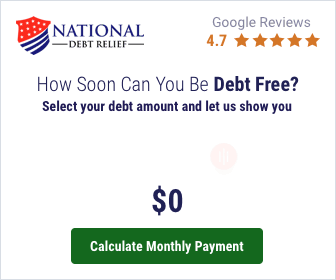If you are a state employee, you may be eligible for student loan forgiveness. This blog post will discuss the eligibility requirements and how to apply for student loan forgiveness. Keep reading to learn more!
State employees may be eligible for student loan forgiveness through the Public Service Loan Forgiveness Program (PSLF).
The PSLF is a federal program that allows student loan borrowers to have their loans forgiven after making 120 qualifying payments.
State employees must meet the following requirements to qualify for PSLF:
1. Have a Qualifying Employer
State employees must work for a qualifying employer to be eligible for student loan forgiveness. A qualifying employer is a government or non-profit organization that provides public services.
Some examples of qualifying employers include:
- The federal government
- State governments
- Local governments
- Public schools
- Non-profit organizations that provide public services, such as hospitals and homeless shelters
2. Full-Time State Employees
State employees must work full-time to qualify for student loan forgiveness.
Most state jobs require full-time hours, so this should not be a problem for most state employees.
3. Eligible Repayment Plan
State employees must be enrolled in an eligible repayment plan to qualify for student loan forgiveness.
The most common eligible repayment plans are the Income-Based Repayment Plan (IBR) and the Pay As You Earn Repayment Plan (PAYE).
If you are not currently enrolled in one of these plans, you can switch to an eligible repayment plan at any time.
PSLF does not apply to the following repayment plans:
- Standard Repayment Plan for Direct Consolidation Loans
- Graduated Repayment Plan
- Extended Repayment Plan
- Alternative Repayment Plan
4.State Employees Must Have Eligible Loans
State employees must have student loans that are eligible for PSLF.
Eligible student loans include:
- Direct Loans
Direct Loans are student loans made by the U.S. Department of Education. They are available to students who attend qualifying schools and meet other eligibility requirements. Direct Loans can be used to pay for college expenses, such as tuition and room and board.
There are two types of Direct Loans:
Subsidized Loans: These loans are offered to students who demonstrate financial need. The government pays the interest on the loan while the student is in school and during the six-month grace period after the student graduates or leaves school.
Unsubsidized Loans: Students who do not demonstrate financial need are offered these loans. The student is responsible for paying the interest on the loan, even while they are in
- Stafford Loans
Stafford Loans are student loans made by private lenders, such as banks or credit unions. They are available to students who attend qualifying schools and meet other eligibility requirements. Stafford Loans can be used to pay for college expenses, such as tuition and room and board.
- PLUS Loans
PLUS loans are student loans offered by the U.S. Department of Education to parents of dependent undergraduate students and graduate or professional students.
Parents can borrow up to the total cost of their child’s education minus any other financial aid their child receives. PLUS loans have a fixed interest rate of 7.9% for the 2018-2019 school year.
Direct Consolidation Loans
Consolidation loans are student loans that allow you to combine multiple student loans into one loan. This can make it easier to keep track of your student loans and make your monthly payments more manageable.
There are two types of consolidation loans: direct consolidation loans and student loan consolidation loans.
Direct consolidation loans are student loans offered by the U.S. Department of Education. With a direct consolidation loan, you can consolidate any federal student loans that you have into a new loan with a fixed interest rate.
Student loan consolidation loans are student loans that private lenders offer. With a student loan consolidation loan, you can consolidate any personal and federal student loans into a new loan with a fixed
Family Education Loan (FFEL) Program and the Federal Perkins Loan (Perkins Loan)
Federal student loan programs that do not qualify for PSLF include the Federal Family Education Loan (FFEL) Program and the Federal Perkins Loan (Perkins Loan). They may become eligible if you consolidate your debts into a Direct Consolidation Loan.
Only eligible payments made on the new Direct Consolidation Loan can be included toward the 120 payments required for PSLF under conventional PSLF Program standards if you consolidate your loans.
Any payments made on the loans prior to consolidation are not counted. If you combine these loans into a Direct Loan before October 31, 2022, you may be eligible for a limited PSLF waiver credit for payments made on those loans.
5. 120 Qualifying Payments.
To receive student loan forgiveness under the PSLF program, state employees must make 120 qualifying payments. A qualifying payment is a payment that is completed on time and in full.
Qualifying payments can be made while you are:
- In school
- On a grace period after graduation or leaving school
- In an income-driven repayment plan
- Making partial payments due to economic hardship
Payments that are not considered qualifying include:
- Defaulted payments
- Payments that are less than the required monthly amount
Do You Need Help With Your Student Loans?
We’re here to assist you if you’re overwhelmed by all of this information. For a long time, we’ve been assisting individuals like you in getting their federal student loans out of default.
Contact us right now to schedule a no-obligation consultation. We’ll develop a plan that takes your present financial position into account while also enabling you to accomplish your long-term goals.





